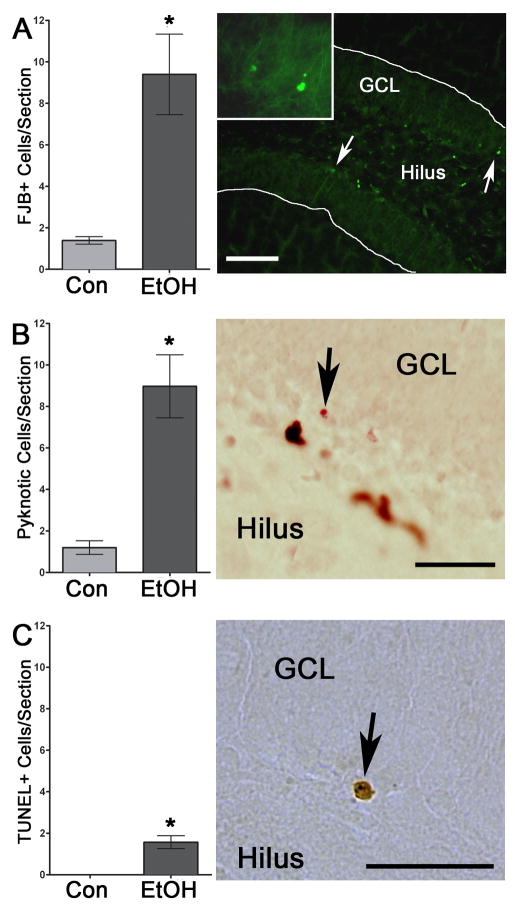Figure 7.
Cell death is significantly increased after four days of binge alcohol exposure according to three different measures. A) Binge alcohol exposure significant increased the number of FJB+ cells in the dentate gyrus as shown in representative photomicrographs of the alcohol-exposed tissue. Inset picture is of cells noted by the right most arrow. Scale bar = 100μm. B) Similarly, pyknosis was significantly increased after alcohol exposure in the dentate gyrus and subgranular zone. Arrows indicate a cell with condensed chromatin in the nucleus, characteristic of a pyknosis from a representative Ki67-labeled section (brown cells) that was counterstained in Neutral Red (pink). Scale bar = 30μm. C) The mechanism of cell death was examined by TUNEL staining for apoptosis. Very little TUNEL reactivity was observed, even though it was slightly but significantly increased after binge alcohol treatment, which suggests that cell death observed by FJB and pyknosis is not apoptotic. Past work in binge-exposed adults supports this observation (Obernier et al., 2002) as adult rats were similarly TUNEL negative and morphological assessments indicated dark cell degeneration, a necrotic form of cell death. Arrow indicates one of the very few TUNEL+ cells in the subgranular zone of the dentate gyrus. Scale bar = 30 μm. *p< 0.05

